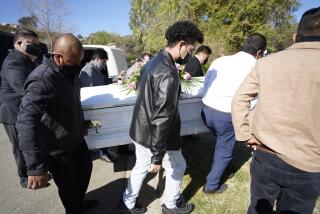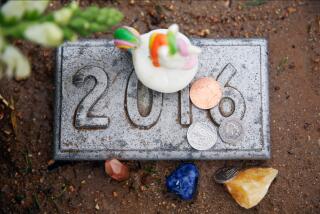Elderly Who Live Alone Benefit : New Study Indicates a Remarkable Record of Stability
- Share via
WASHINGTON — Elderly Americans living alone were more likely to still be alive two years later than those who made their home with someone else, a government researcher reported recently.
More than three-quarters of them also were still living independently after two years, said Dr. Mary Grace Kovar of the National Center for Health Statistics.
Her findings are based on interviews in 1984 and 1986 with people who were age 70 and over in 1984.
“The most important thing is the stability. Most of these people, two years later, are still living in the community. Those who were living alone are still alone, and those with someone else are still with someone else,” Kovar said in a telephone interview.
“As you would expect, because these people are 72 or older, death rates are high. But relatively few of them are in nursing homes,” she said.
Of nearly 6.4 million elderly Americans living alone in 1984, 89.8% were still alive two years later, the study found.
By comparison, 89% of those living with a spouse survived two years and 84.3% who had been living with someone else were still alive.
People living with brothers and sisters tended to live longer, but that may have been because longevity ran in the family, Kovar speculated.
Of those who had been on their own in 1984, 77.8% were still living by themselves in 1986, she found. About 7.4% of them had moved in with someone else--most often family--and 4.6% were in an institution.
“It certainly appears that for some of them life is better” two years later, Kovar said. “Some have remarried . . . and when we asked those who had moved why . . . we got answers ranging from health to being nearer to children to spending the summer in Maine and winter in Florida.” One, she commented, even cited lower golf fees for moving.
A major factor in continued independence is likely that those living alone were more healthy at the start of the study, she concluded in the report, “Aging in the 80s, People Living Alone--Two Years Later.”
A sizable proportion of those living with someone in 1984 had such an arrangement because of their health. “They were already having health problems and at high risk of death or institutionalization,” Kovar reported.
Health was also a factor in the stability of those living alone, she found.
For example, people who needed help with basic daily activities such as bathing, dressing, eating or using the toilet, were much more likely to have died over the two-year span.
While only about 10% of all those living alone died in the two-year period, 25% of those who had needed help in basic daily activities died and 16% were in nursing homes after two years.
There was a noticeable difference for those people who have contact with friends and neighbors, who go to church or synagogue or attend sports events, Kovar commented.
On the other hand, regular contact with family did not seem a significant factor in longer life and more independence. Perhaps those reporting extra family contacts needed the help because they were not well, Kovar speculated.
Another follow-up series of interviews is scheduled for this summer, to compare the same group of elderly in 1988.






